It was a Colossal Road Trip — Don't Need to do That Again — Just…

Delving Into the Oversize Load Permit Process – DIY to Save Money!
9.
Delving Into the Oversize Load Permit Process – DIY to Save Money!

We Decided to Secure the Oversize Load Permits Ourselves –
There are many things in life I enjoy, two of those things are saving money and learning. In this spirit, I forged ahead with the Oversize Load permit process one has to go through when traveling on highways with an oversized load. I looked forward to learning how it works, as well as saving money by doing it myself. If you are trailering a load, that is wider than 8 1/2 feet, you have to get an oversize/wide load permit from every state and each Canadian Provence you’ll be traveling through. You can do this yourself or pay a company to obtain the permits. Each has advantages, obviously, if you do it yourself you’ll save money. In either case, you need to gather the same data to provide to each State/Province government agency. Your planned route, dates of transit, trailered measurements and weights, insurance information, state registration information, and more, depending on the government unit.
Physically there are a few things you’ll need
to display on the tow vehicle and trailer unit.
An oversize load” banner needs to be secured to the front of the truck and back of the boat as well as two red flags. The flags should be placed at the widest parts of each side of the boat. Oversize load permits vary in price with each state, we’ve paid between $10.00 to $60.00 for the 12 one-time permits we’ve purchased to date. One-time permits are for 5 to 15 days, depending on the State, are date specific and each state has its own rules regarding what day of the week, time of day, holiday, and weather dos and don’ts. Whether you obtain the permits yourself or purchase them through a permit company you’ll need to study, understand, and obey every state’s laws you’ll be traveling through.
If you have the time and like to save money, obtaining the permits on your own is worthwhile, once you get past the learning curve. If it’s not a consideration, because you don’t want or need the experience. Hiring an approved “Permit Company” will save you time, but keep in mind you’ll pay an upcharge for their service. Lastly, I’d point out one has the option to purchase annual permits. This may be beneficial for your home state or a state you’ll be transiting through on a regular basis. An important part of this exercise is to calculate which is better for your trailering plans. We did this for Ohio, where we knew we’d be traveling through 3 times within 12 months.
Thinking of trailering an oversize load? This is a good place to start…
U.S. Department of Transportation/Federal Highway Administration.
Finally, we relaxed and enjoyed the trip!
By the time we stored Kismet in Ohio for her three-month nap, we had experienced everything but snow during our six-day cross-country travel. There were no mishaps or problems at all trailering this bigger boat. With each passing day the initial apprehension, of trailering an oversize load, slipped away. Finally, we were able to relax and enjoy the road trip.



Sometimes you see some interesting stuff while driving cross-country.


Crossing the Continental Divide. Lots of bugs on our trip!




Due to traveling later in the season, we did not boater home at all during this trip. Also, we forgot to bring our small, portable, heater with us. So, we stayed at motels along the way. We always check with motels ahead of making reservations, to make sure they have appropriate parking for our oversize load. This one, in Wyoming, was perfect for our truck and trailer. In addition, we were able to walk, just down the hill, to a fantastic restaurant (below).


We stopped at all truck weigh stations on our route. Most were either closed or just waived us through. If they stopped us, we asked what the protocol was for their state. One time while stopped at a Rest Area, we were approached by a State Police officer, no problem, he just wanted to check our papers.


Our end route was Sidney, Ohio – where my mother lives. We would visit with her a few days after Kismet was stowed in her winter berth, a landscaper’s storage building. Then we would continue home, to Traverse City where we would be land-locked and catching up on time with family and house chores, until after the holidays.
We have stored the R27 at this same storage building previously, this time we had to park the boat outside and leave it there for a while, as another boat needed to go in before we stored Kismet. Since we planned to leave Ohio with the boat in January and the other boat would be stored all winter, we needed to go in last. Our brother-in-law, Steve, who lives in Sidney, kindly moved the boat into the shed a few weeks after we left her there. Thanks, Steve!




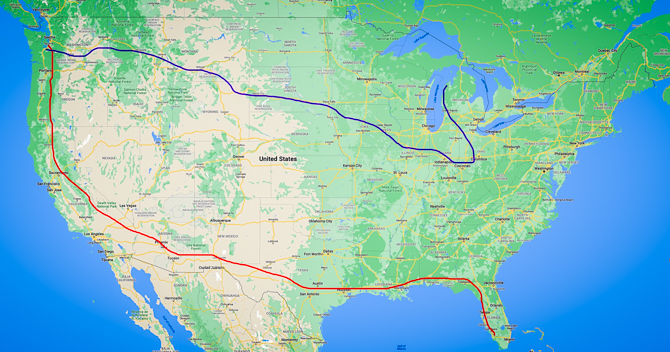
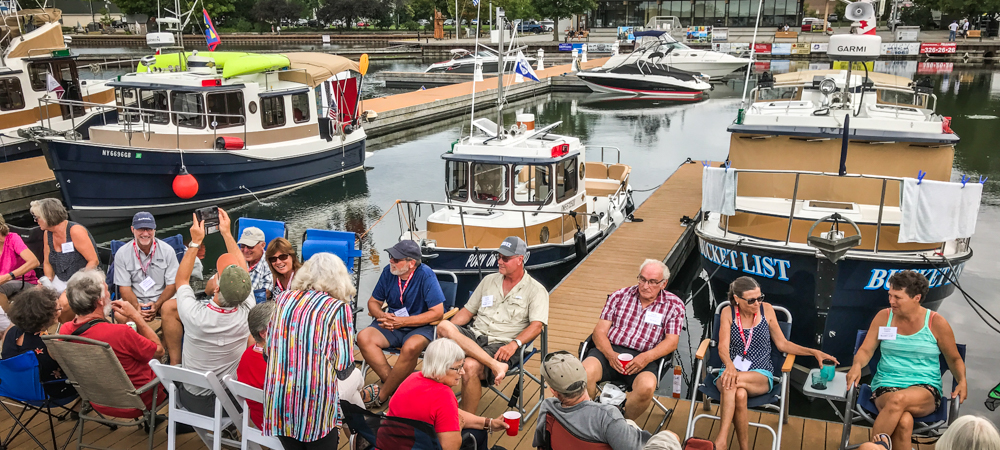
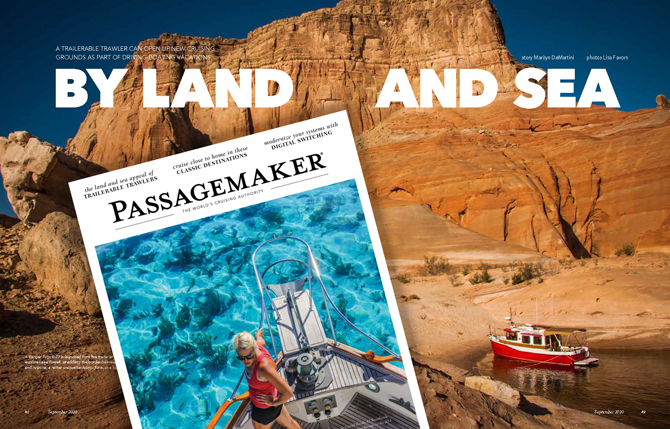
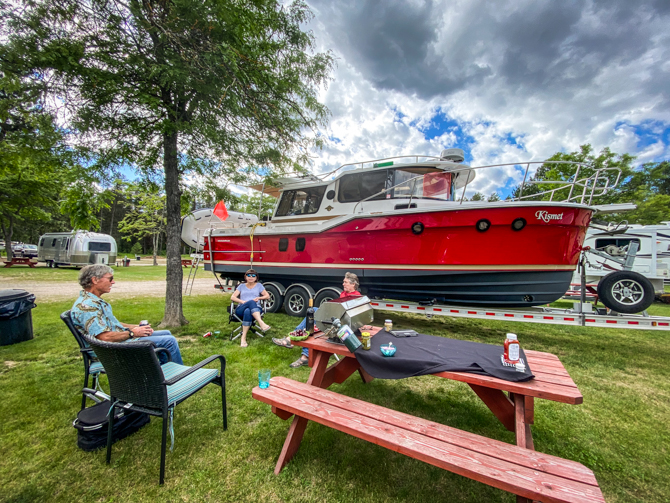
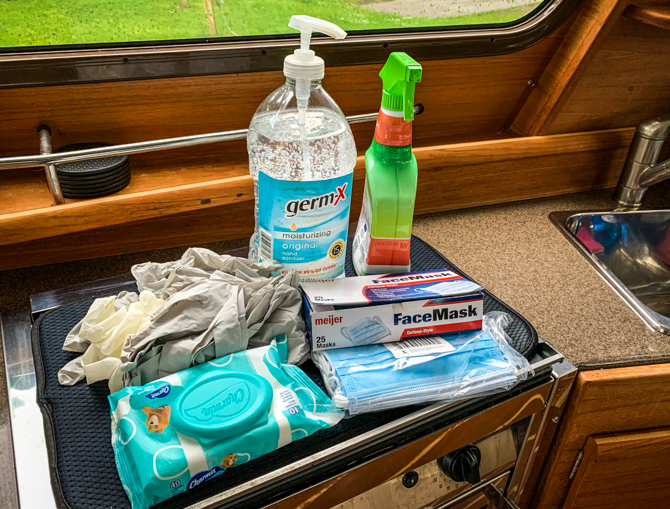
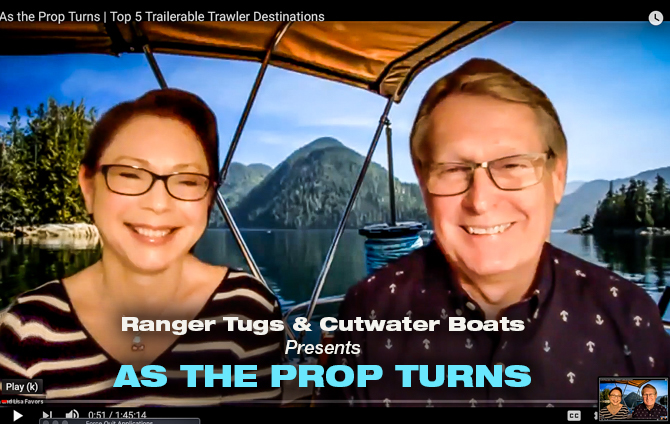
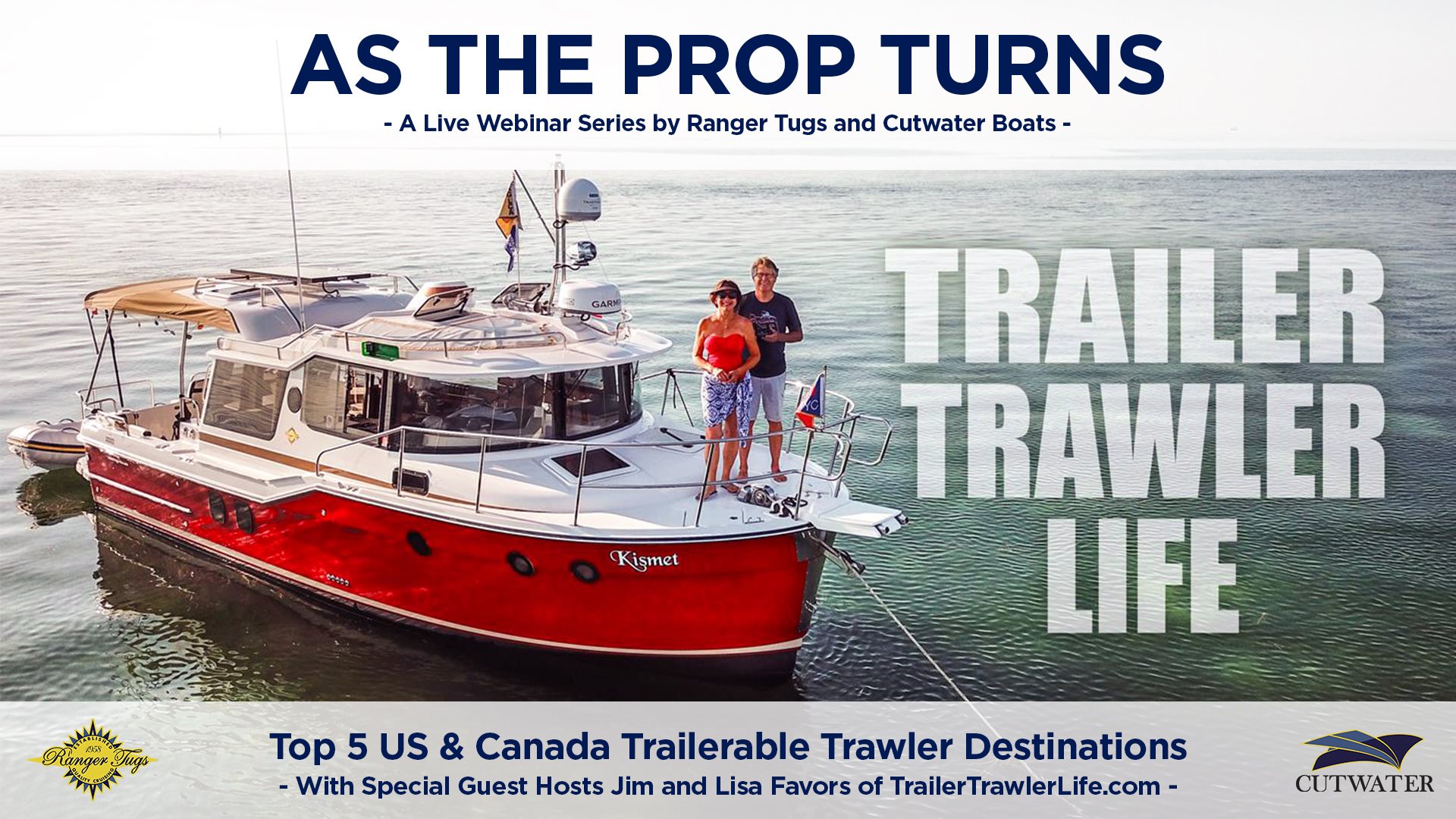

My family recently went to Lake Powell on vacation and on the way there we saw a lot of trucks with banners that said “oversized load” on the front of their trucks. As I was reading your article, you state that a one time permit can last 5 to 15 days. Now knowing this information, I am glad the trucks we saw got their oversized truck permits. I’m going to assume that this creates a safe driving environment for everyone.
Good background info on the permitting process. I can imagine driving the oversized load on the freeways was pretty straight forward. How did you find the driving on secondary roads? Did you find the extra width impact whatever you normally do for lunch stops, fuel stops, rest stops?
I know you did not “boater home” on this trip, but I’m curious in general as to how receptive you have found campgrounds to having boats park at one of their campsites. Have you ever been turned away? Any difference in reception between commercial and public campgrounds?
Hi Mike, thank you for your comments. We never ventured too far off of the main highways, except in Ohio. In Ohio I had to trailer Kismet to the storage building, shown in the photos, but I was familiar with the road. Most state permits give you instructions that tell you that you are only allowed to trailer your oversize load a couple of miles off of your approved route – this is for fuel, food, hotel stays, etc. We planned our stops so they would be easy off, easy on. Not knowing what is ahead of me on a non-approved road, I found myself limiting our route to the side of caution. Almost all fuel stops were at big truck stops for this reason. With that said I guess we found ourselves sticking close to the main highway more than with the R27 we trailered.
We have been turned down at RV Parks only a handful of times because of their policy or simply lack of knowledge about a boat being self contained. We typically call ahead and ask for a pull-through for 60′ of rig. We get the reservation and when we show up address any questions they may hav, we have had great success this way. We don’t state up front we are trailering a boat, unless we are asked directly. When we arrive they are more interested in the novelty of the boat, where we’re heading, etc.
We trailer a Bond yacht Motorcat 30 with a beam of 9ft 6. Now starting our 5th year, we have never bought a permit and have never been questioned. We trailer from Missouri to Wisconsin or last year to Mackinaw City.
Hope to see you on the water sometime!
Hello Bob: I was told if a permit is needed, because of height, width, weight or any reason, one is required to obtain a permit before the “oversized load” is moved. The reasons have to do with not being legal. If someone gets pulled over and a permit is asked for by an officer and you do not have one you could be subject to a ticket.
Worst case scenario would be if one got into an accident and does not have a permit. In this case your insurance company may not cover a claim and if another party is involved their insurance company could go after your insurance company. If not covered maybe even the person who does not have the permit.
When I heard this I did not want to take the risk. I’m not saying what any one person should do, or not do. Only spelling out what is required and what can happen, in a negative way, based on my research, if someone does not have a permit.
Hope this helps.
Jim F
We came to similar conclusions when we towed the first TT35 to the Annapolis show last fall (10 foot beam). I contracted a permitting service, and permits for a five-state move came to $310 dollars. Later, I did the research on self issuing, and concluded I could have done it myself on state websites for about $115. To help other boaters with oversize tows, I went ahead and created a link page to every state’s wide lot permitting service. you can find it at http://www.greatharbourtrawlers.com/towing-resources.html
Thanks for passing on your knowledge and experience Pierce.
Jim